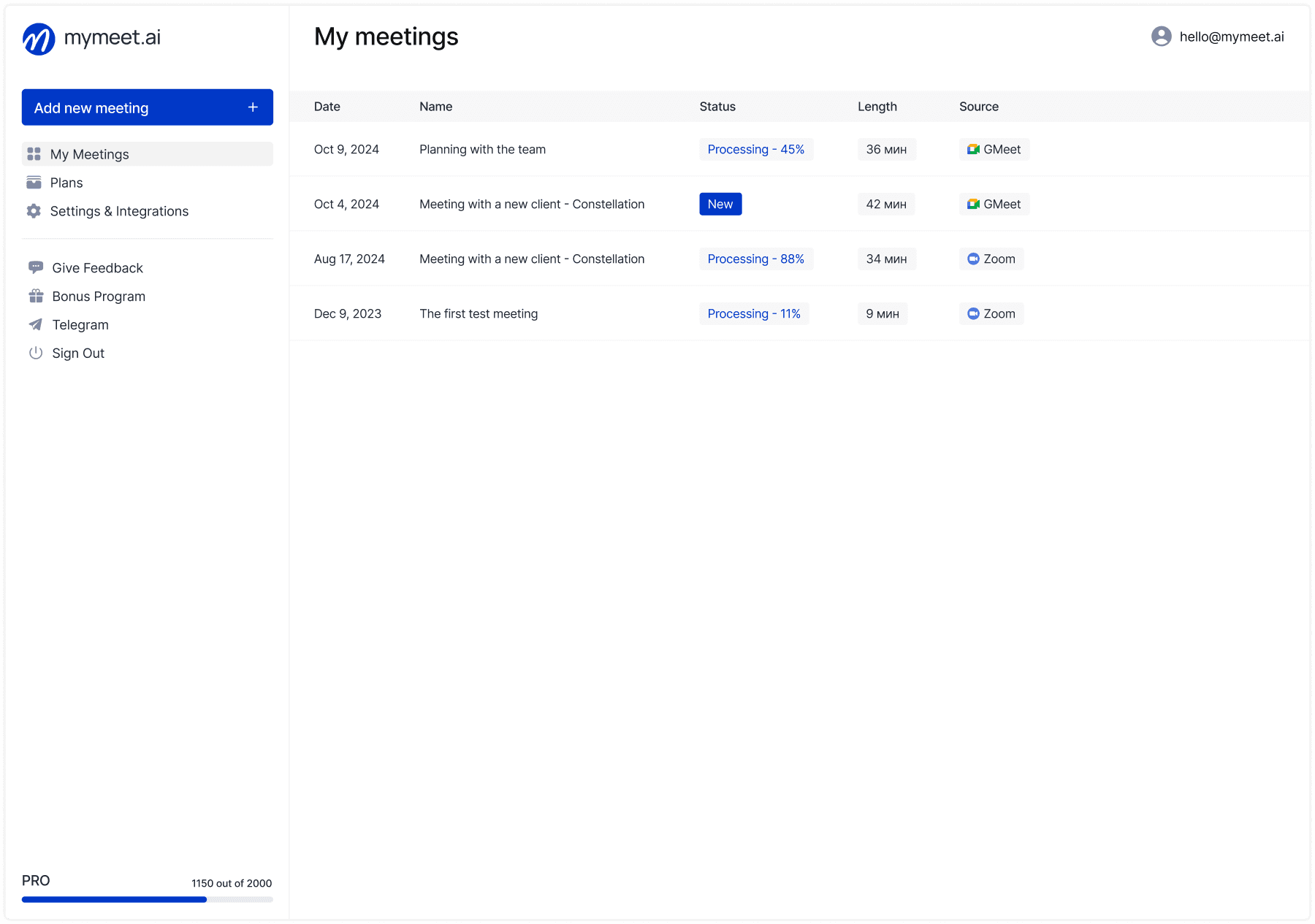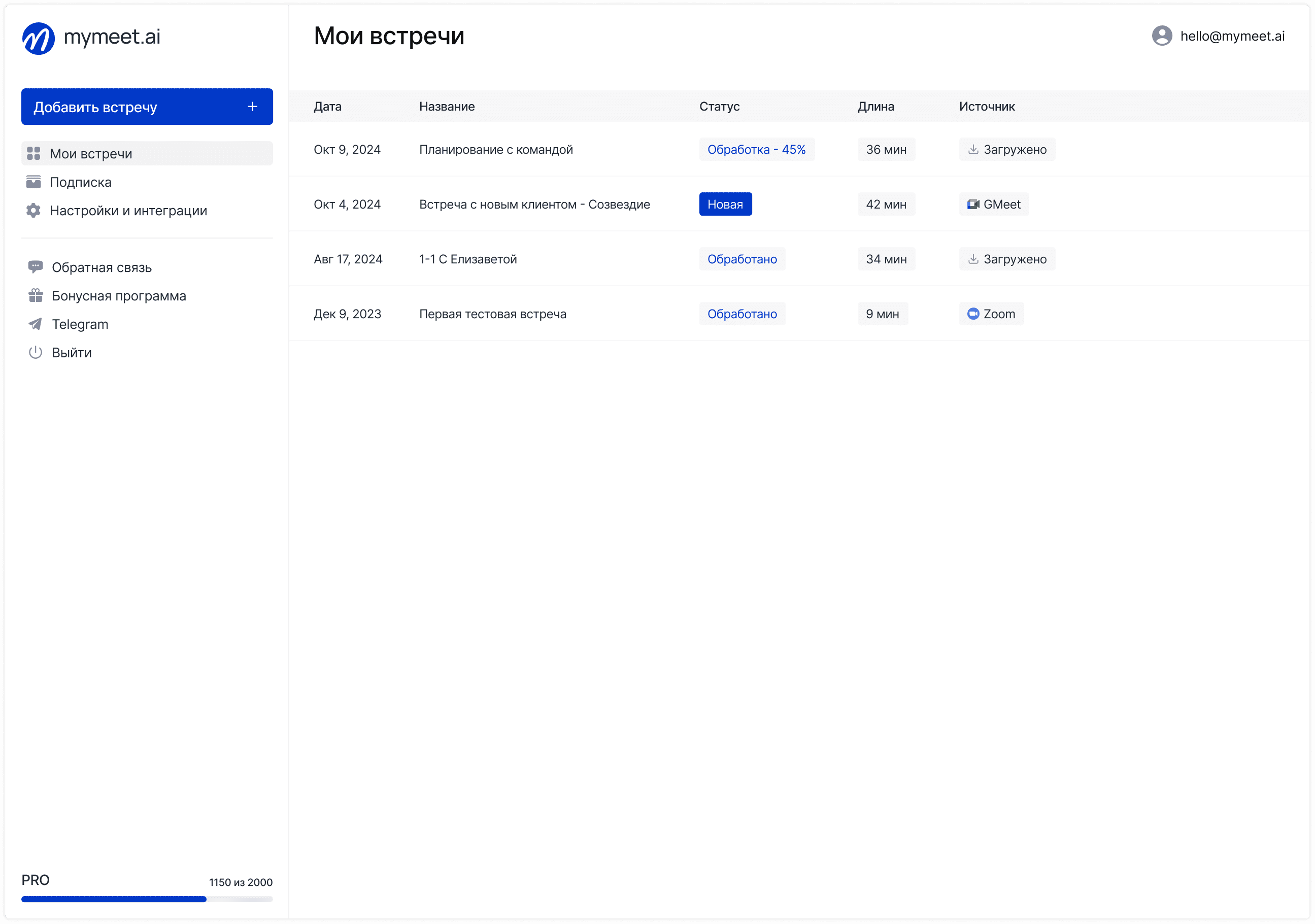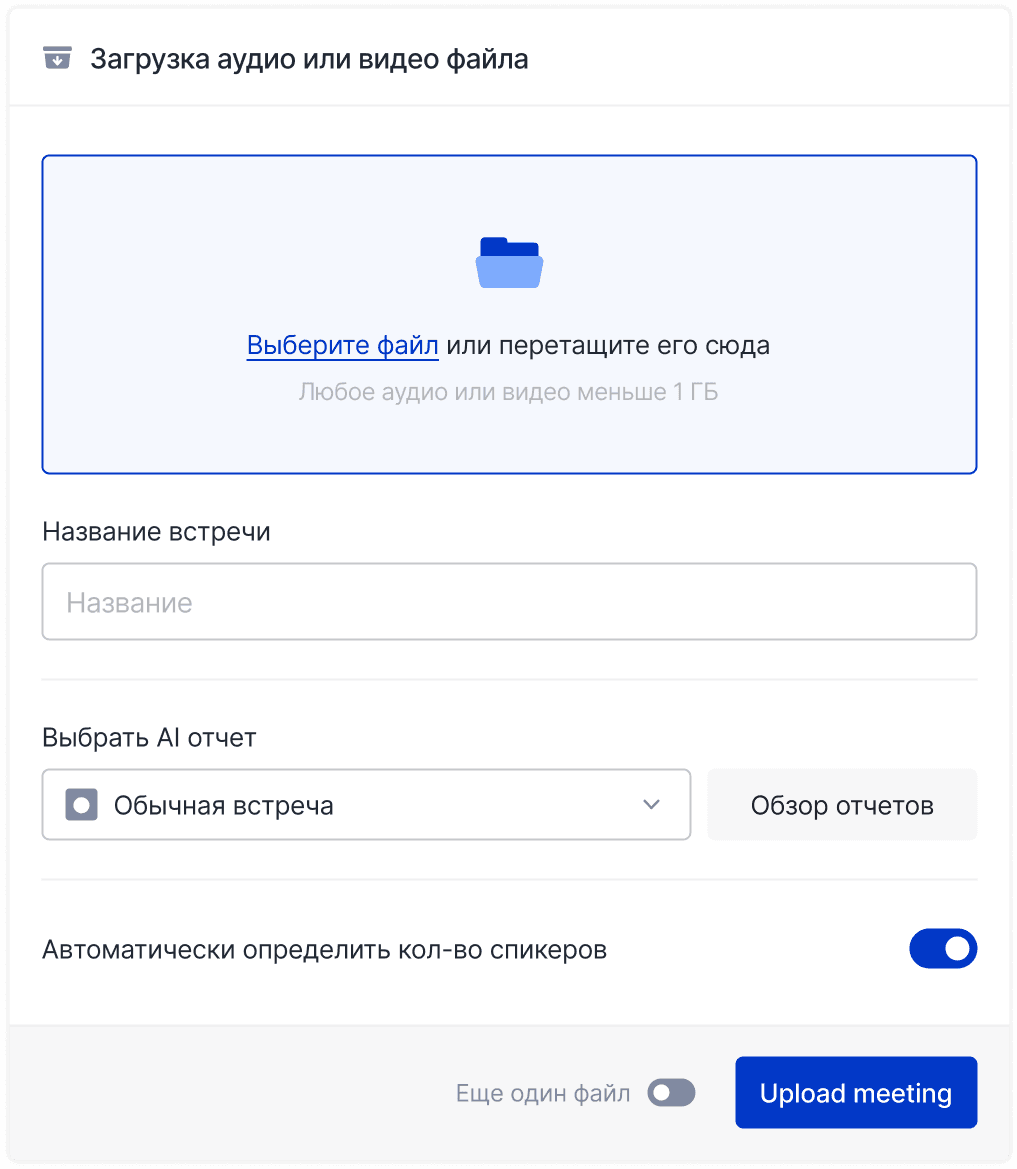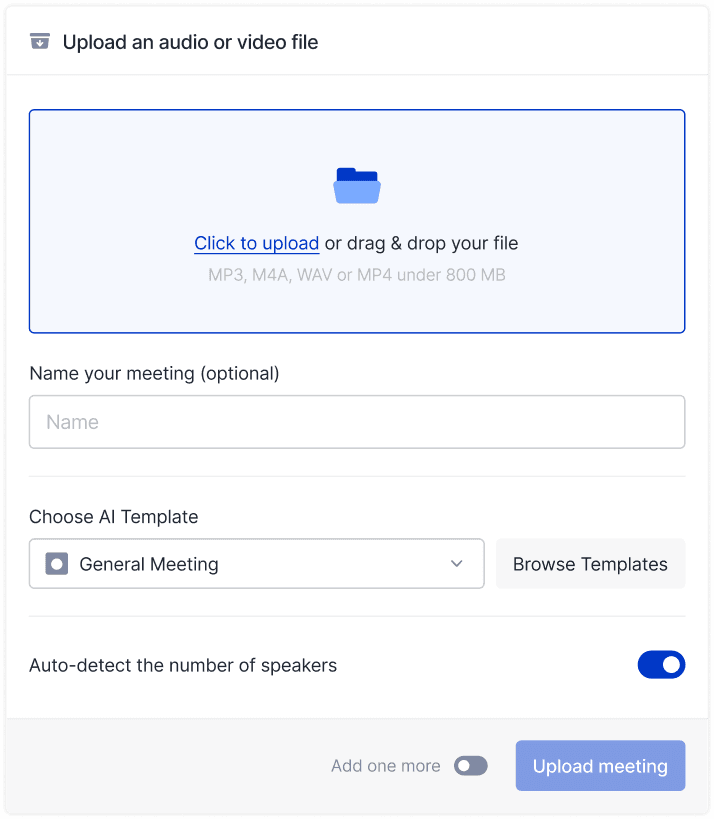Technology & AI

Fedor Zhilkin
May 29, 2025
Remember when you found the perfect video for learning a new topic, only to discover it was in a foreign language? Or when your business content could have attracted an international audience if only there was a way to overcome the language barrier? With advancements in translation technology, such problems are gradually becoming a thing of the past.
In a world where 60% of internet content is created in English, but 75% of users aren't native English speakers, video translation isn't just a convenient option—it's a necessity. Educational platforms, business presentations, entertainment content—all these areas benefit from being accessible in different languages.
Modern technology offers numerous ways to translate videos: from YouTube's built-in features to professional programs and innovative AI solutions. In this guide, we'll examine all available methods, their advantages, limitations, and help you choose the optimal option for your needs.
Automatic Video Translation on YouTube
YouTube, as the largest video platform, offers built-in translation tools that are becoming increasingly sophisticated with each update.
How Built-in Translation Works
YouTube's automatic translation feature is based on two key technologies: automatic speech recognition (to create original subtitles) and machine translation (to convert these subtitles into other languages).
The system analyzes the video's audio track, recognizes speech, and converts it to text. This text is then translated into your chosen language using neural networks. The accuracy of such translation is constantly improving but still depends on the clarity of the original speech, the speaker's accent, and the presence of background noise.
Activating Translation on Computer
To translate YouTube videos on a computer, follow these steps:
Open a video on YouTube

Click the gear icon in the bottom right corner of the player
Select "Subtitles"

Click "Auto-translate" (subtitles must be on)

Choose the desired language from the list

After activating this feature, subtitles will be displayed in your chosen language in real-time.
Translation on Mobile Devices
On smartphones and tablets, the process is slightly different:
Open a video in the YouTube app

Tap the three dots in the upper right corner

Select "Subtitles"

Select "Auto-translate"

Choose the translation language

Note that on some mobile devices, the interface may slightly differ depending on the app version.
Limitations of Automatic Translation
Despite its convenience, YouTube's automatic translation has several limitations:
Speech recognition quality may be poor with bad audio or strong accents
Translation of idioms, jokes, and cultural references is often inaccurate
Technical terms and specific jargon may be translated incorrectly
Not all language pairs are supported equally well
Automatic punctuation can create problems for text comprehension
Translating Videos from English to Other Languages
Given the dominance of English-language content, translation from English to other languages is the most in-demand direction.
Features of Translation from English
The English language has several characteristics that affect translation quality:
The conciseness of phrases is often lost when translating to languages with more complex grammar
The ambiguity of English words can lead to inaccuracies
Idiomatic expressions require cultural adaptation
Specific slang and abbreviations are difficult for automatic translation
When translating from English to Spanish, Russian, German, and other popular languages, the quality of automatic translation is usually higher than for less common language pairs.
Optimal Tools for Popular Language Pairs
For translating from English to common European languages (Spanish, French, German, Italian), YouTube's built-in translator shows good results. For Eastern languages (Chinese, Japanese, Korean), specialized tools are sometimes better.
Services like Google Translate API or DeepL API can be integrated with subtitle creation programs, allowing for higher quality translation, especially for specific topics.
Tips for Improving Translation Quality
To improve the quality of translation from English to other languages:
When possible, use videos with ready-made English subtitles (not automatically generated)
For technical or scientific content, verify the correct translation of key terms beforehand
Edit automatically created subtitles before translation if necessary
Consider cultural characteristics of the target audience
Translating Videos from Other Languages to English
The reverse process—translation from various languages to English—is also highly demanded, especially for researchers, students, and business analysts working with international materials.
Specifics of Translating Various Languages
The quality of translation to English depends on the source language:
European languages (French, Spanish, German) are translated quite accurately
Slavic languages (Russian, Ukrainian, Polish) can create difficulties due to cases and complex grammar
Asian languages (Chinese, Japanese, Korean) often require additional processing due to completely different structure
Tools for Translation to English
YouTube offers automatic subtitle translation to English for most videos. To improve quality, you can use:
Specialized translators for specific language pairs
Professional subtitle programs with integrated translators
Context-aware machine translation services such as DeepL
Assessing Translation Quality
To evaluate the accuracy of translating various languages to English, it's useful to consider:
The complexity of the source language's grammatical structure
The presence of specific cultural elements in the original
Technical or scientific orientation of the content
Original audio quality and speech clarity
The mymeet.ai Platform for Video Translation

Among modern solutions for working with audio and video content, the mymeet.ai platform stands out, offering a range of tools for transcription and translation.

Capabilities of mymeet.ai
The mymeet.ai service was initially developed for processing business meetings, but its functionality is perfectly suited for working with video files:
High-precision audio transcription with recognition of different speakers

Automatic translation of transcriptions into major world languages
Creation of structured content summaries

Interactive access to content via AI assistant
Working with Audio from Video Files
To work with video on mymeet.ai:
Extract the audio track from the video file (this can be done using free online tools)
Upload the audio file to the mymeet.ai platform
Select original and translation languages
Receive transcription and translation
The platform is particularly effective for content in various languages, showing high speech recognition accuracy and quality translation.
Benefits for Educational and Business Content
Mymeet.ai offers several features useful for specific types of content:
Ability to ask questions about video content through the AI assistant
Automatic highlighting of key topics and important moments
Creation of structured summaries for educational materials
Identification of tasks and solutions for business content
These functions make the platform especially valuable for working with educational videos and business presentations.
Professional Tools for Video Translation
For more demanding users, there are specialized programs offering advanced capabilities for working with video content translation.
Subtitle Programs
Professional tools for creating and translating subtitles include:
Subtitle Edit — a powerful free editor with automatic translation functions
Aegisub — advanced formatting and synchronization capabilities
Amara — an online platform with collaborative translation features
Caption — professional software with AI integration
These tools allow not only translating but also precisely adjusting subtitle timing, formatting, and other parameters.
Cloud Translation Services
Cloud solutions offer advantages in accessibility and performance:
Rev.com — professional translation and transcription services
Sonix — automatic transcription and translation
Maestra — AI transcription with integrated translation to more than 50 languages
Happy Scribe — transcription and translation for media professionals
Such services usually offer a combination of automated and human translation services, allowing for high quality.
Comparing Paid and Free Solutions
The choice between paid and free tools depends on your needs:
Free solutions are suitable for personal use, irregular tasks, and working with non-critical content
Paid services are justified for professional use, regular video work, and cases where translation accuracy is critically important
The cost of paid solutions varies from subscriptions for a few dollars per month to payment per minute of processed video.
Creating Your Own Translated Subtitles
Creating subtitles manually ensures maximum accuracy and control over the result.
Step-by-Step Guide to Creating Subtitles
To create your own translated subtitles:
Download automatic subtitles from YouTube (if available)
Edit them to correct recognition errors
Use machine translation tools as a starting point
Manually edit the translated text
Adjust timing for synchronization with video
Save the file in a compatible format (SRT, WebVTT)
Upload finished subtitles to YouTube or another platform
Subtitle Formats and Compatibility
Main subtitle formats:
SRT — the most common format supported by most platforms
WebVTT — a modern web standard with advanced styling capabilities
ASS/SSA — a complex format with rich styling options
XML/TTML — used by professional services and broadcasting companies
For YouTube, SRT or WebVTT are recommended as the most universal formats.
Programs for Creation and Editing
There are several specialized programs for working with subtitles:
Subtitle Workshop — user-friendly interface, many editing functions
Jubler — cross-platform editor with visual timing
Subtitle Edit — advanced features, including speech recognition
Aegisub — a professional tool with powerful formatting functions
Many of these programs are free and offer import/export capabilities in various formats.
Using AI and Automatic Translators
Artificial intelligence has revolutionized translation, and its application for video content is becoming increasingly common.
Modern AI Solutions
Various AI tools for video translation are available on the market:
Whisper AI from OpenAI — a powerful speech recognition system with translation functions
Google Cloud Speech-to-Text + Translation API — a combination for transcription and translation
Microsoft Azure AI — tools for analyzing and translating media content
Deepgram — a specialized system for working with audio and video
These systems use neural networks to achieve high translation quality with context awareness.
Comparing Machine Translation Accuracy
Different AI services show varying results depending on context:
DeepL often outperforms other systems when translating European languages
Google Translate handles a wide range of languages well
Microsoft Translator shows good results for Asian languages
Amazon Translate is effective for technical content
The choice of optimal solution depends on the specific language pair and video topic.
When to Use Automatic Translation
Automatic translation is recommended in the following cases:
You need to quickly get a general idea of the content
The video contains predominantly factual information without complex cultural nuances
You need to process a large volume of content with limited resources
The content doesn't contain specific terminology requiring precise translation
For critical content, legal or medical topics, it's recommended to combine automatic translation with professional editing.
Translating Educational and Technical Videos
Educational and technical content presents special challenges in translation due to specific terminology.
Specifics of Translating Educational Content
When translating educational materials, it's important to consider:
The need to preserve pedagogical structure
Accuracy in conveying terms and concepts
Cultural differences in educational approaches
Terminology consistency throughout the course
For such videos, creating a glossary of key terms beforehand is often required.
Working with Technical Terminology
Technical videos require special attention to specialized vocabulary:
Use industry glossaries to verify terms
When using automatic translation, be sure to check specific terms
Consider differences in technical standards across countries
Remember that some terms are better left untranslated
For such materials, a combination of automatic translation with subsequent expert review works best.
Methods for Maintaining Accuracy
To ensure high accuracy in specialized content translation:
Create terminology databases before starting translation
Use tools with customization capabilities for specific topics
Involve subject matter experts for verification
Provide contextual information for translators (human or AI)
Legal Aspects of Video Translation
When translating and distributing video content, it's important to consider the legal aspects of this activity.
Copyright in Translation
Video translation touches on intellectual property issues:
The translation itself can be considered a derivative work
Commercial use of a translation usually requires permission from the original owner
Some countries have restrictions on translating certain types of content
Permissions and Restrictions on Platforms
Different video platforms have their own rules regarding translations:
YouTube allows adding translated subtitles but gives content creators the right to approve them
Vimeo offers possibilities for creating multilingual subtitles with more flexible control
Educational platforms often have special programs for content translation
Before publishing translated subtitles, familiarize yourself with the specific platform's rules.
Fair Use Rules
The concept of "fair use" may apply to translations:
Translation for personal use usually doesn't cause problems
Educational and research purposes often fall under fair use
Non-commercial translations have better chances of being recognized as fair use
The extent of translation and its impact on the original's potential market play a key role
Comparative Table of Video Translation Methods
Method | Speed | Accuracy | Cost | Ease of Use | Suitable for |
YouTube Auto-translation | High | Medium | Free | Easy | Personal use, general content |
Professional translation services | Low | High | High | Low | Commercial projects, official materials |
Creating your own subtitles | Low | Depends on skills | Free/Low | High | Quality control, specialized content |
AI translators (DeepL, Google) | High | Medium-high | Mixed | Medium | Large volumes, preliminary translations |
mymeet.ai | High | High | Subscription | Low | Business and educational materials |
Combined approach (AI + editing) | Medium | High | Medium | Medium | Quality projects with limited budget |
Professional programs (Subtitle Edit, etc.) | Medium | Depends on translation source | Low/Medium | High | Detailed work with timing and formatting |
Tips for Improving Video Translation Quality
Regardless of the chosen method, there are general recommendations for improving translation quality.
Editing Automatically Created Subtitles
To improve automatically generated subtitles:
Correct recognition errors of proper names and special terms
Add punctuation if it's missing or incorrect
Break long sentences for easier reading
Remove repetitions, slips of the tongue, and filler words
The quality of original subtitles directly affects the translation result.
Combining Automatic and Manual Translation
The optimal approach is often combining methods:
Use AI to create an initial translation
Manually edit key segments
Check terminology using specialized dictionaries
Perform a final review considering video context
This approach combines the speed of automation with the accuracy of manual translation.
Considering Cultural Aspects
When translating, it's important to adapt content to the cultural realities of the target audience:
Adapt examples and analogies for better understanding
Consider differences in measurement systems (metric vs. imperial)
Be attentive to dates and time formats
Adapt humor and cultural references where possible
Conclusion and Future Outlook: Where Video Translation is Heading
Today, video translation technologies are experiencing a real breakthrough. What previously required a team of translators and weeks of painstaking work can now be done in minutes—all thanks to neural networks and artificial intelligence.
Here's what's especially important:
Translation has become smarter. Modern systems understand not just words but visual context—they can consider who's speaking, in what tone, and what's happening on screen.
Exciting innovations are expected. In the coming years, we'll see real-time translation with voiceover in another language—not just with robotic diction, but preserving the intonation and emotions of the original.
Multilingualism is now standard. There's no need to create separate video versions for each language. Viewers can choose which language to watch in—right in the player.
What does this mean for us, ordinary people?
You no longer need to know a language to understand an interesting video.
Businesses can easily reach international audiences.
Learning, education, and communication become more accessible than ever.
The world is becoming increasingly connected, and translation technologies help erase language boundaries. And this is just the beginning—it will become even simpler, faster, and cooler in the future.
FAQ: Frequently Asked Questions About Video Translation
Can YouTube videos be translated into any language?
YouTube offers automatic subtitle translation into more than 100 languages, but quality can vary significantly depending on the language pair. The highest quality translation is available for popular languages.
How do I translate a YouTube video to English?
Open the video, click the subtitle icon in the player, then the settings gear, select "Auto-translate" and "English" from the available languages list.
Is video translation on YouTube paid?
YouTube's built-in automatic subtitle translation feature is completely free. Paid solutions are only required for professional translation or creating advanced subtitles.
Can I download a video with translated subtitles?
YouTube doesn't provide an official way to download videos with subtitles. However, you can download the subtitles themselves in SRT format and use them with downloaded video in a local player.
What quality does YouTube's automatic translation have?
The quality of YouTube's automatic translation is sufficient for general understanding of content, but often contains inaccuracies, especially when translating idioms, jokes, or specialized terminology.
How do I translate a YouTube video to Spanish?
The process is the same as for other languages: enable subtitles, then in settings select "Auto-translate" and "Spanish" from the available languages list.
Is it possible to translate speech in video in real time?
Yes, there are solutions for simultaneous speech translation, such as Microsoft Translator Live and Google Meet Translation. However, their accuracy is lower than batch translation systems.
How do I create multilingual subtitles for my video?
Upload original subtitles in the main language, then use the "Add new subtitles or CC" function in YouTube Studio to add translations. You can create subtitles in multiple languages for one video.
How do I enable automatic translation on the YouTube mobile app?
In the YouTube mobile app, open a video, tap the three dots, select "Subtitles," then tap the settings icon and select "Auto-translate" and the desired language.
Can I translate only part of a video?
YouTube doesn't offer the ability to translate only part of a video. However, when creating your own subtitles, you can translate only specific segments if necessary.
Fedor Zhilkin
May 29, 2025








